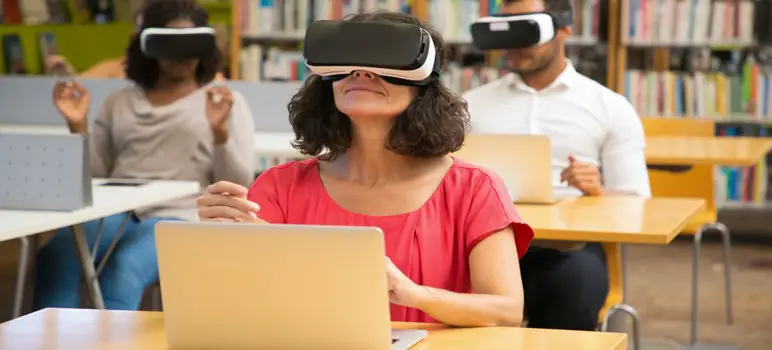In today’s digital age, educational technology has revolutionized the way we learn and teach. From interactive online platforms to advanced tools and applications, technology has become an integral part of the educational landscape. In this article, we will delve into the different types of educational technology that are reshaping the learning experience for students and educators alike. Whether you’re a teacher, student, or someone interested in the future of education, understanding these innovative tools can help you make the most of the digital learning environment.

What are The Examples of Technology in Education?
1. Learning Management Systems (LMS)
Learning Management Systems, commonly referred to as LMS, are web-based platforms designed to facilitate and manage educational courses and materials.
LMSs provide a centralized hub where educators can create, organize, and deliver content, such as lecture notes, quizzes, assignments, and discussion boards.
Students can access these resources anytime, anywhere, fostering a flexible and personalized learning experience.
2. Virtual Reality (VR) and Augmented Reality (AR)
Virtual Reality and Augmented Reality technologies have gained significant traction in the education sector.
VR immerses learners in a simulated environment, while AR overlays digital content onto the real world.
These technologies offer interactive and immersive experiences that enhance understanding and engagement.
For example, students can explore historical landmarks, dissect virtual organisms, or simulate scientific experiments, all from the comfort of their classrooms.
3. Gamification
Gamification refers to the integration of game elements and mechanics into educational activities.
By introducing elements like points, levels, badges, and leaderboards, gamification enhances motivation and encourages active participation.
Educational games and simulations provide an enjoyable learning experience, promoting critical thinking, problem-solving, and collaboration skills.
Gamified learning platforms can be used across various subjects and grade levels, making education more engaging and interactive.
4. Adaptive Learning
Adaptive Learning technology utilizes data-driven algorithms to personalize the learning experience for each student.
By analyzing individual learning patterns and performance, adaptive learning platforms provide tailored content and activities.
These platforms adapt to the student’s strengths, weaknesses, and preferred learning styles, ensuring optimal learning outcomes.
Adaptive learning tools help educators identify knowledge gaps and provide targeted interventions to enhance student understanding.
5. Mobile Learning
Mobile devices, such as smartphones and tablets, have become ubiquitous in today’s society.
Leveraging the popularity of mobile technology, educational apps and mobile learning platforms offer flexibility and accessibility.
Students can access educational content on-the-go, allowing for self-paced learning and engaging in educational activities beyond the traditional classroom environment.
Mobile learning promotes convenience, interactivity, and encourages continuous learning.
6. Collaborative Tools
Collaboration is a crucial aspect of the learning process.
Educational technology provides a range of collaborative tools that facilitate teamwork and communication among students and educators.
Virtual classrooms, discussion forums, video conferencing, and cloud-based document sharing platforms enable seamless collaboration regardless of geographical constraints.
These tools foster active engagement, knowledge sharing, and the development of essential social skills.
Pro Tip: While technology improves education, it’s also crucial in disaster recovery, like drones. Explore how drones aid in disaster recovery and tech infrastructure, making a significant difference in the lives of those affected by calamities worldwide.
Conclusion
Educational technology is reshaping the educational landscape, offering innovative tools and approaches to enhance teaching and learning experiences. The types of educational technology discussed in this article, including Learning Management Systems, Virtual Reality, Gamification, Adaptive Learning, Mobile Learning, and Collaborative Tools, represent a fraction of the vast array of possibilities. As technology continues to advance, educators and learners can leverage these tools to unlock new realms of knowledge, engagement, and educational success.
Remember, understanding the different types of educational technology is just the beginning. It is essential to assess the specific needs and goals of your educational environment to determine which tools and technologies align best with your objectives. Embracing educational technology empowers educators and learners to thrive in the digital era, unlocking the full potential of education.
